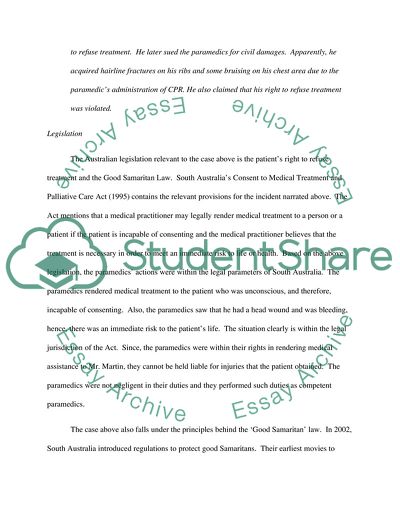Cite this document
(Legal and Ethical Aspects of Paramedic Practice Article, n.d.)
Legal and Ethical Aspects of Paramedic Practice Article. Retrieved from https://studentshare.org/health-sciences-medicine/1727141-legal-and-ethical-aspects-of-paramedic-practice
Legal and Ethical Aspects of Paramedic Practice Article. Retrieved from https://studentshare.org/health-sciences-medicine/1727141-legal-and-ethical-aspects-of-paramedic-practice
(Legal and Ethical Aspects of Paramedic Practice Article)
Legal and Ethical Aspects of Paramedic Practice Article. https://studentshare.org/health-sciences-medicine/1727141-legal-and-ethical-aspects-of-paramedic-practice.
Legal and Ethical Aspects of Paramedic Practice Article. https://studentshare.org/health-sciences-medicine/1727141-legal-and-ethical-aspects-of-paramedic-practice.
“Legal and Ethical Aspects of Paramedic Practice Article”, n.d. https://studentshare.org/health-sciences-medicine/1727141-legal-and-ethical-aspects-of-paramedic-practice.


